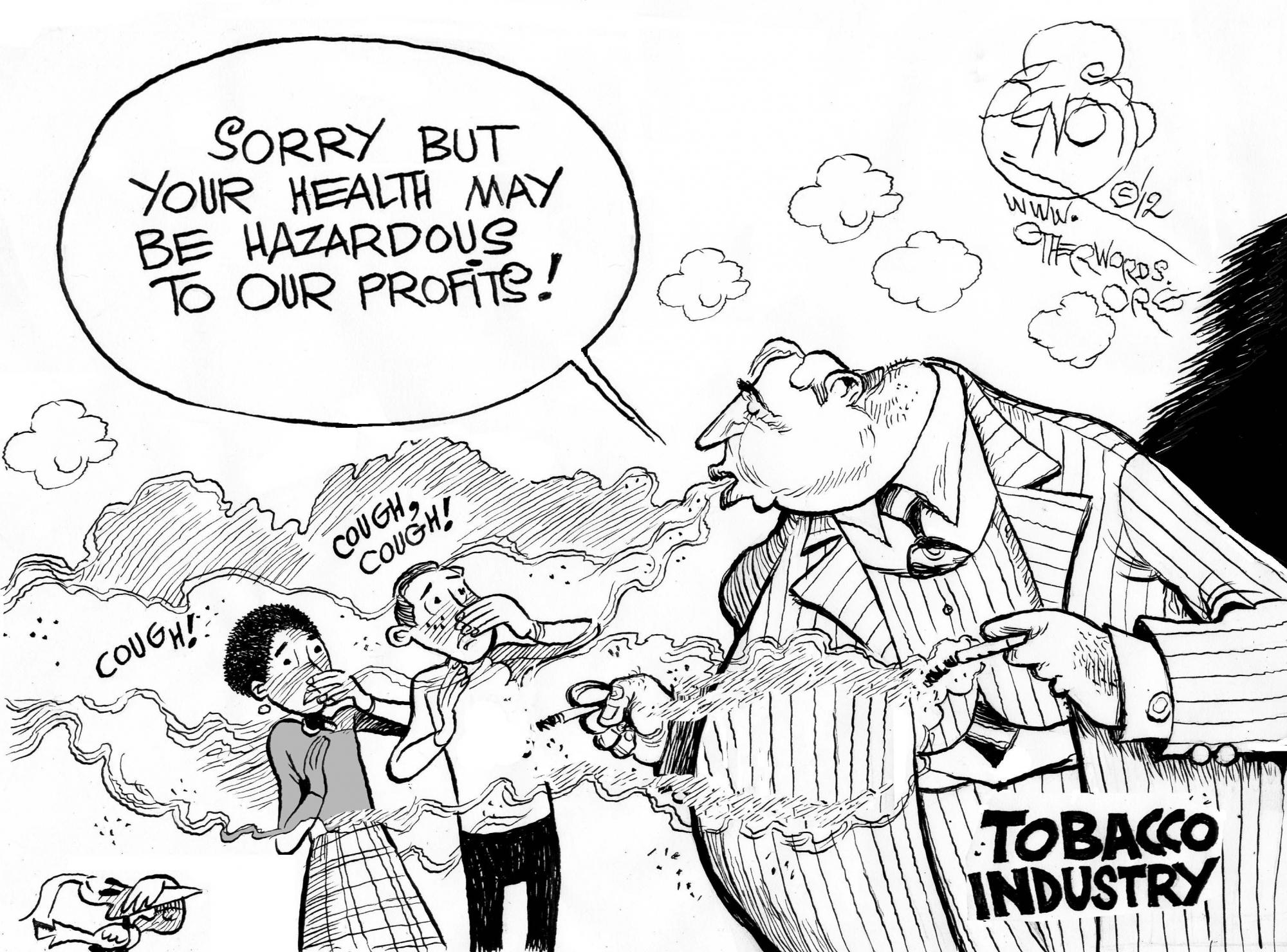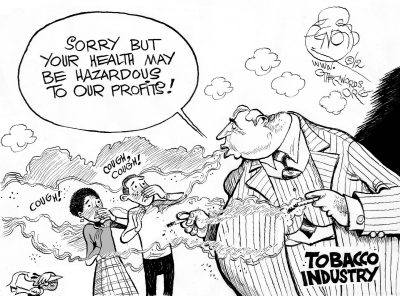Would you believe that 45 million adult Americans still smoke? That’s about one in five of us grownups. Worldwide this killer habit ends about six million lives each year. But what’s most disturbing — 10 percent of victims never even took a puff. They got their cancer from second-hand smoke.
As a superannuated politician, I remember well the hundreds of meetings in back rooms and city council chambers where the air was so thick that I could hardly see, let alone breathe. Luck alone saved me. Others were not so fortunate.
Behind our mayor’s dais hung a smoke-blackened WPA mural of the city’s founder, which depicted him cheating Native Americans out of their land. When the time came to relocate to a new city hall, taxpayers spent tens of thousands to clean the smoke off of that painting by hand with chemical-laden cotton balls. Affected lungs are even harder to restore.
Luckily, smoking is now less socially acceptable. It’s on the decline, but the slope isn’t steep any more. The percentage of adult smokers inched down to 19.3 percent in 2010 from 20.9 percent in 2005, according to the Centers for Disease Control. Public health champions had aimed for a much greater decline and their failure is no accident.Tobacco companies continue to spend millions to protect their dishonest market. Many states aid in this quest by redirecting their annual payments on old cigarette lawsuit settlements away from smoking cessation programs and into other spending. Taxes trump cancer every time.
The federal government does try to do something about our leading cause of preventable deaths, however. Last year, the Food and Drug Administration ordered that all cigarette packaging display disgustingly graphic photos of lung cancer sufferers in various stages of decay. In August, a federal panel struck down that order on the grounds that it interferes with corporate free speech. It’s likely that the requirement will be reinstated on appeal, but the ruling shows why smoking is so hard to root out — and how much power the tobacco giants wield.
An enlightening contrast to our own anti-smoking system is prominently visible in some foreign countries. The warnings on their cigarette packages can be so glaring that you’d think you were approaching Chernobyl. Which, in a sense, I suppose you are.
With smoking rates declining in richer nations, tobacco companies are flocking to Asia and Africa, where smokes are cheaper and ads are sometimes reminiscent of the cheery tobacco propaganda Americans were fed in the 1950s.
Here at home, the long war against tobacco keeps flaring in new pockets of resistance. The latest is “roll-your-own” shops. It seems that loose tobacco for pipes is taxed at a mere fraction of that for cigarettes. Not deterred by the niceties of law, some companies have simply been mislabeling their product and selling it as pipe tobacco. The merchants cheerfully sell the fake product and thoughtfully “rent” the use of rolling machines to customers. Lest you assume that the overall effect is trivial, know that it amounts to about 20 million pounds per year and $500 million in lost taxes.
As long as corporate greed continues to infect us, smoking will undoubtedly keep killing hundreds of thousands of Americans every year. But you’d think the 50 states might show a little more interest in doing something to protect their people from our nation’s top killer.

